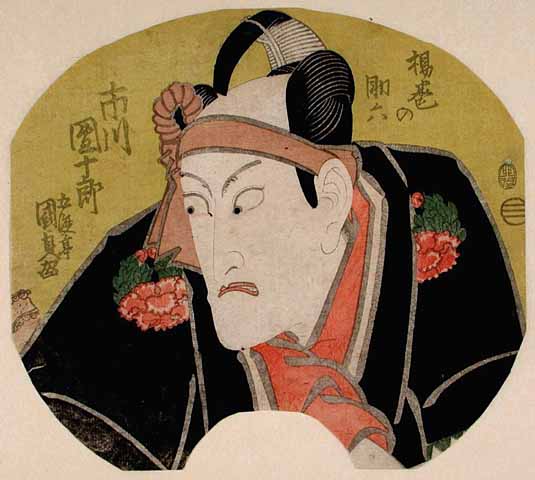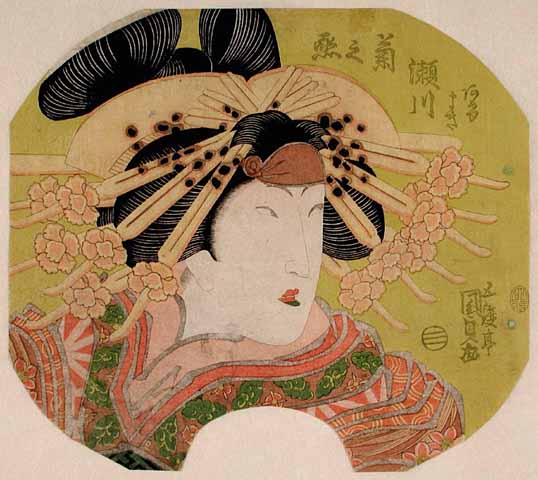
Ichikawa Danjuro VII Kunisada 14
Ichikawa Danjuro VII as Sukeroku in Sukeroku yukari no Edo zakura (Sukeroku’s affinity for the cherry blossoms of Edo) performed at the Tamagawa Theatre in 1819; Private collection

Segawa Kikunojo V Kunisada 15
Segawa Kikunojo V as Agemaki in Sukeroku yukari no Edo zakura (Sukeroku’s affinity for the cherry blossoms of Edo) performed at the Tamagawa Theatre in 1819
Private collection
Ichikawa Danjuro VII as Sukeroku (left) and Segawa Kikunojo V as Agemaki (right) in Sukeroku yukari no Edo zakura (Sukeroku’s affinity for the cherry blossoms of Edo) performed at the Tamagawa Theatre in 1819
Private collection
Issued in 1819, this pair of fan prints (uchiwa-e) depicts two of the most popular actors of the day in the lead roles of a new production of one of the best-loved plays in the Kabuki repertoire. Ichikawa Danjuro VII was renowned for his portrayal of the elegant and audacious young hero, Sukeroku, and in 1819 he was competing with Onoe Kikugoro III who was performing in a rival version, thus causing a rift between the two actors. Sukeroku, with his flouting of authority and stylish wit, summed up in his character all those traits that the Edo theatregoer most enjoyed. His costume was that of the Yoshiwara dandy: a robe with flaps that pulled back to show the red lining, and a headband in Edo purple (Edo Murasaki). The word for ‘affinity’ (yukari) in the play’s title also meant ‘purple’ and alluded to this headband. The leading female-role actor Kikunojo V as Sukeroku’s paramour, Agemaki, is dressed in all the finery of the Yoshiwara courtesan. This is an example of a play where the characters are understood to be historical figures in disguise. Sukeroku is actually Soga no Goro, who is seeking out a missing heirloom sword by provoking quarrels with visitors to the Yoshiwara pleasure quarters, thus forcing them to draw their swords.
Pairs of fan prints such as this are particularly rare: they have been clumsily cut out, but were never mounted onto rigid oval frames and used as fans.



